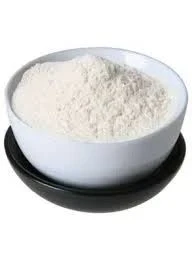
Oct . 10, 2024 17:44 Back to list
HPMC Dispersion Properties and Applications in Various Industries
Understanding HPMC Dispersion Applications and Benefits
Hydroxypropyl Methylcellulose (HPMC) has emerged as a vital ingredient in various industries, particularly in pharmaceuticals, food, and construction due to its unique properties and versatility. HPMC is a semi-synthetic polymer derived from cellulose, which is a natural polymer found in plants. This article will explore the significance of HPMC dispersion, its applications, and the benefits it offers across different fields.
What is HPMC Dispersion?
HPMC dispersion refers to the process of dissolving or dispersing hydroxypropyl methylcellulose in water or other solvents to create a stable solution. This dispersion is critical because HPMC doesn’t dissolve readily without certain conditions, such as temperature and pH control. Once properly dispersed, HPMC exhibits remarkable thickening, binding, and film-forming effects, making it a valuable additive in many formulations.
Applications of HPMC Dispersion
1. Pharmaceuticals In the pharmaceutical industry, HPMC is commonly used as a binder in tablet formulations, controlling the release rate of active ingredients. The ability of HPMC dispersion to create a gel-like consistency is crucial for the manufacture of sustained-release medications. Moreover, HPMC is also useful in ophthalmic solutions where it acts as a viscosity-increasing agent, enhancing the stability and bioavailability of eye drops.
2. Food Industry HPMC is an approved food additive, serving various roles in food processing. It acts as a thickening agent, emulsifier, and stabilizer, helping to improve the texture and shelf life of food products. For instance, it is used in sauces and dressings to provide a desirable consistency and prevent separation. In gluten-free baking, HPMC can mimic the properties of gluten, providing structure and moisture retention to baked goods.
3. Construction In the construction industry, HPMC dispersion is an essential component in the formulation of polymer-modified mortars and adhesives. It enhances water retention, workability, and adhesion, which are crucial for ensuring the durability of construction materials. HPMC-modified products, such as tile adhesives and plasters, offer improved performance, making them popular choices among builders and contractors.
hpmc dispersion

4. Cosmetics and Personal Care HPMC is utilized in cosmetic formulations, including creams and lotions. Its ability to form a protective film and retain moisture makes it an effective ingredient for enhancing the texture and feel of skin-care products. Furthermore, HPMC provides viscosity control in shampoos and conditioners, contributing to a pleasant user experience.
Benefits of HPMC Dispersion
- Non-Toxicity One of the primary advantages of HPMC is its non-toxic nature, making it suitable for various applications, including food and pharmaceuticals. It poses minimal health risks, allowing manufacturers to create safe products for consumers.
- Versatile Functionalities The multifunctional properties of HPMC enable its application in numerous industries. It can act as a thickener, binder, emulsifier, or film-former, showcasing its versatility and adaptability in different formulations.
- Temperature Stability HPMC dispersions remain stable across a range of temperatures, allowing manufacturers to use them in processes with varying thermal conditions. This stability ensures consistent performance in the final products.
- Enhanced Performance Products formulated with HPMC can benefit from improved adhesion, texture, and moisture retention. This enhancement leads to higher quality and more efficient products in various applications.
Conclusion
HPMC dispersion has become an indispensable aspect of numerous industries, providing a wide array of benefits that contribute to product quality and performance. From pharmaceuticals to food processing and construction materials, the unique properties of HPMC underscore its versatility as an additive. As industries continue to evolve, the demand for reliable and safe materials like HPMC will likely persist, highlighting the importance of ongoing research and innovation in this area.
-
Versatile Hpmc Uses in Different Industries
NewsJun.19,2025
-
Redispersible Powder's Role in Enhancing Durability of Construction Products
NewsJun.19,2025
-
Hydroxyethyl Cellulose Applications Driving Green Industrial Processes
NewsJun.19,2025
-
Exploring Different Redispersible Polymer Powder
NewsJun.19,2025
-
Choosing the Right Mortar Bonding Agent
NewsJun.19,2025
-
Applications and Significance of China Hpmc in Modern Industries
NewsJun.19,2025







